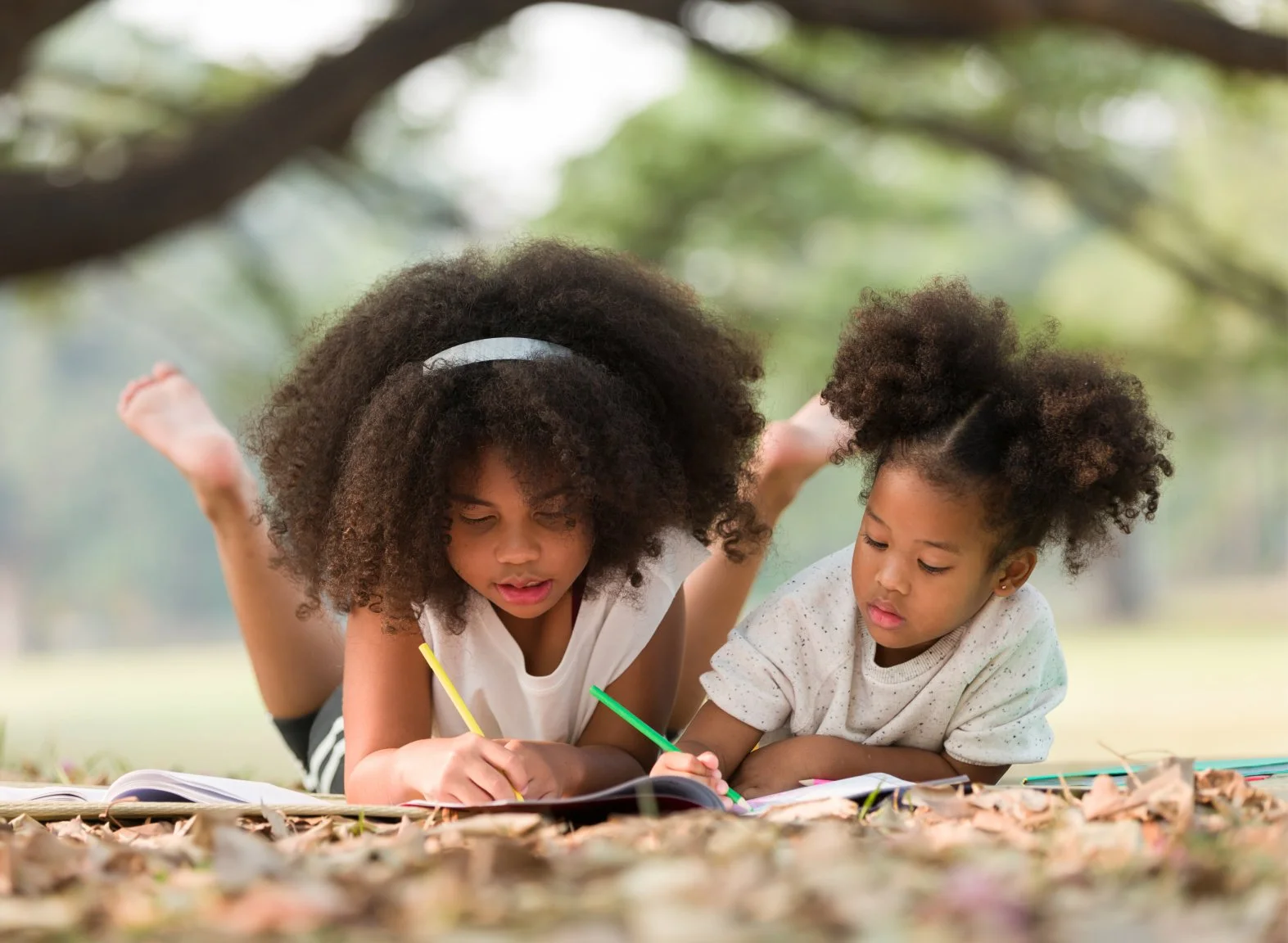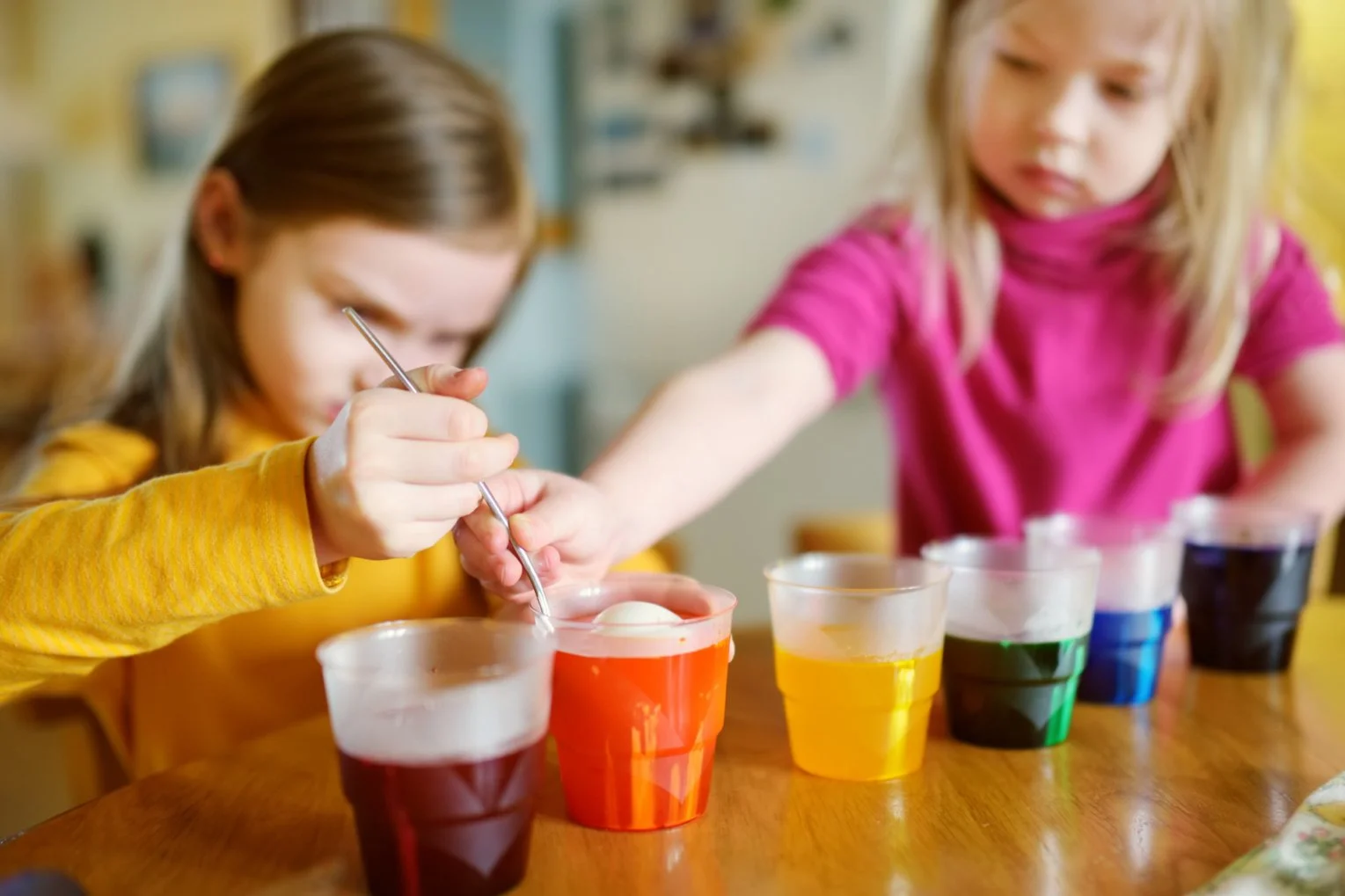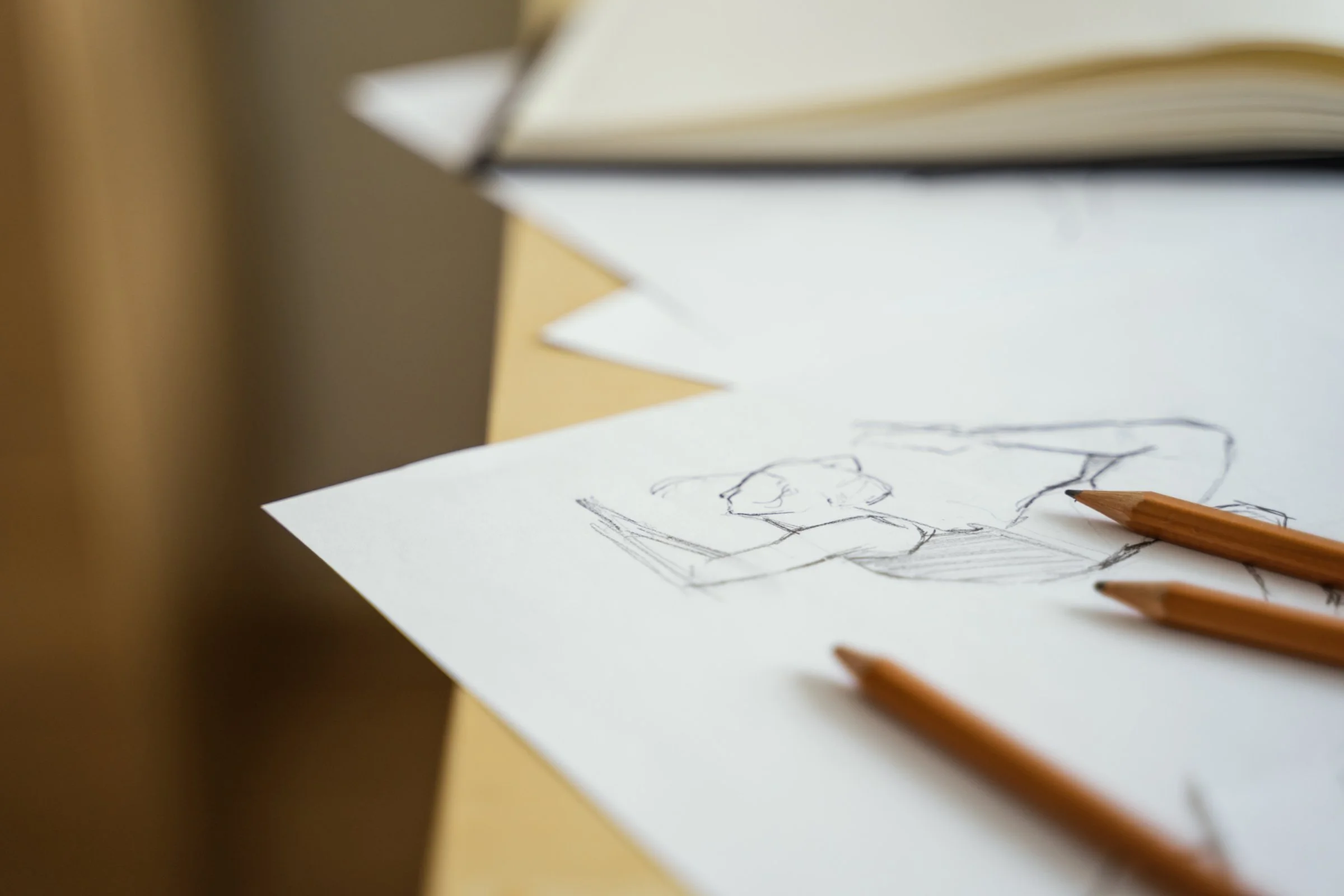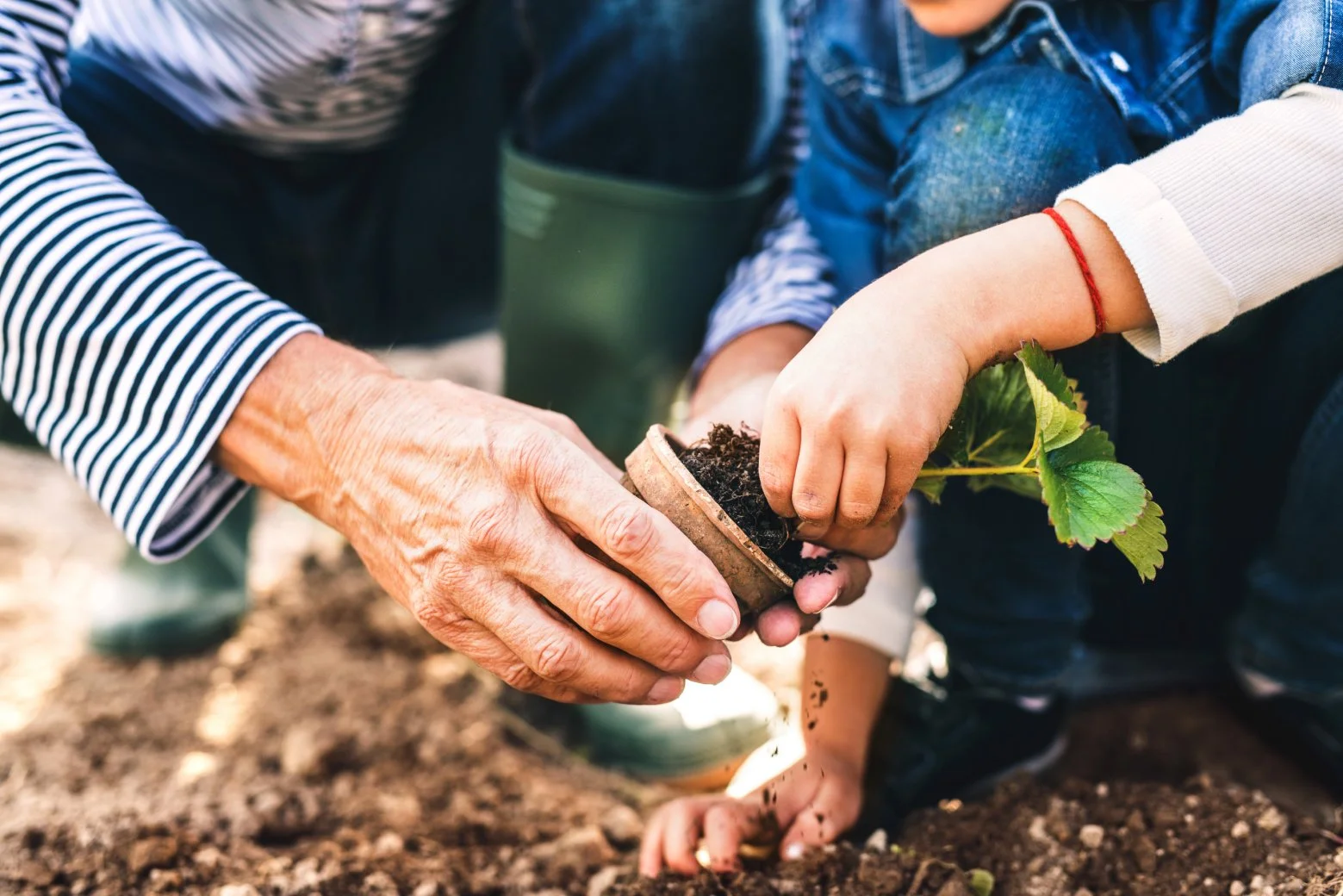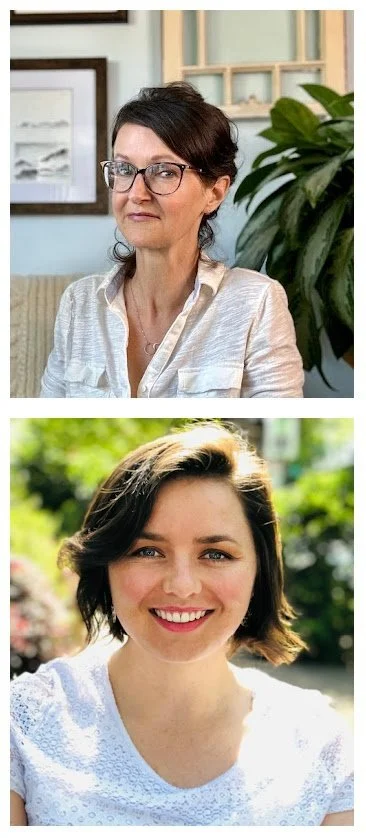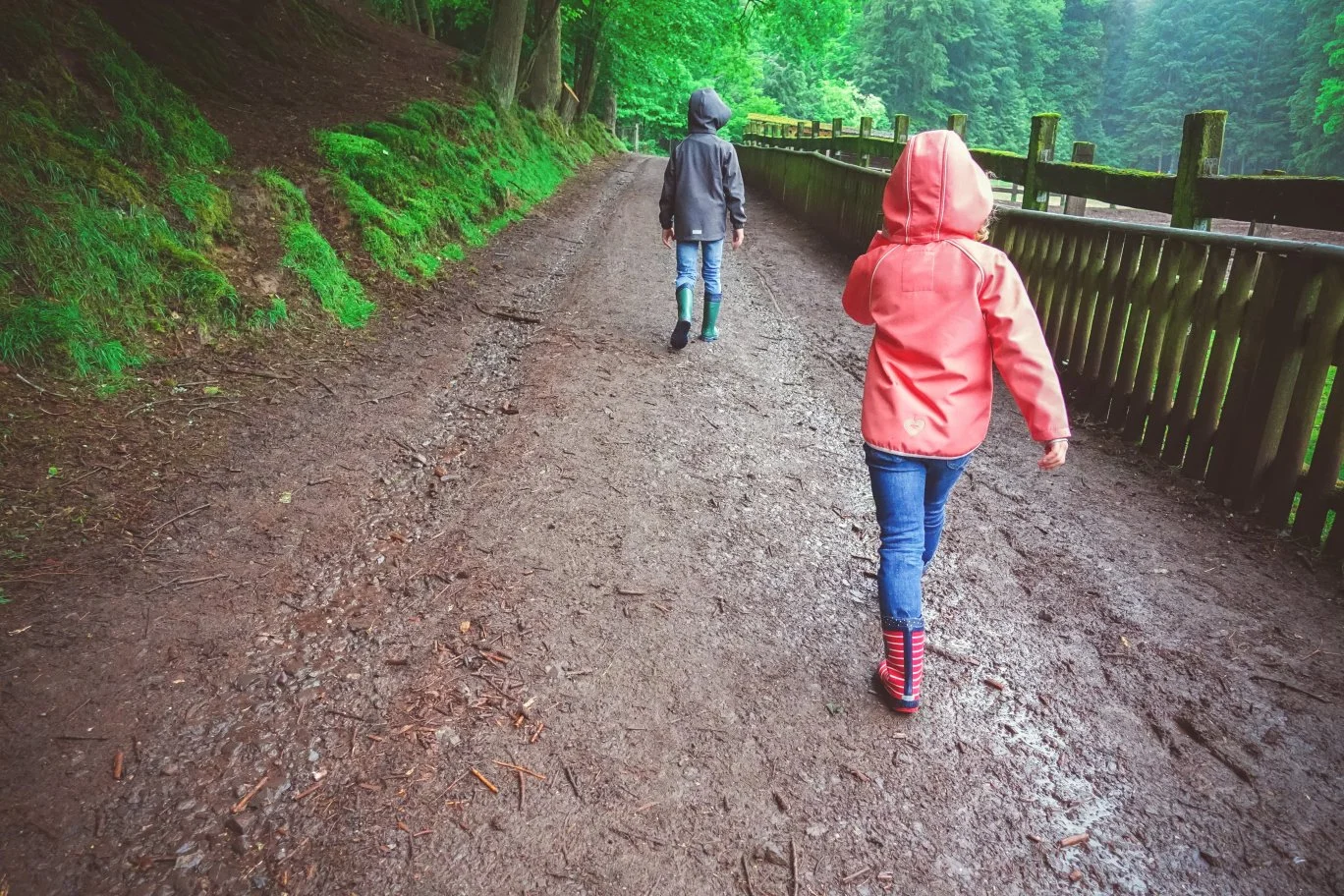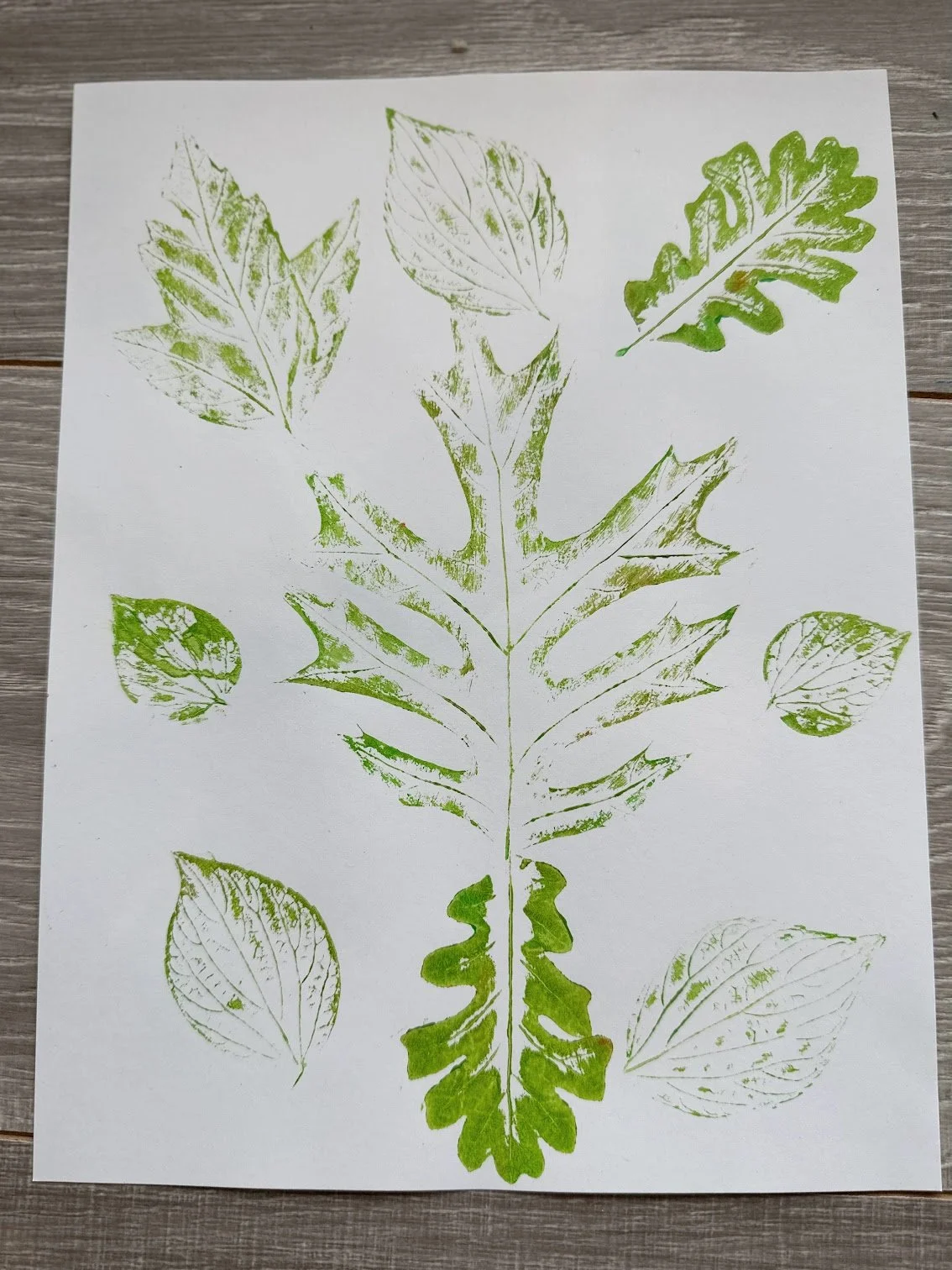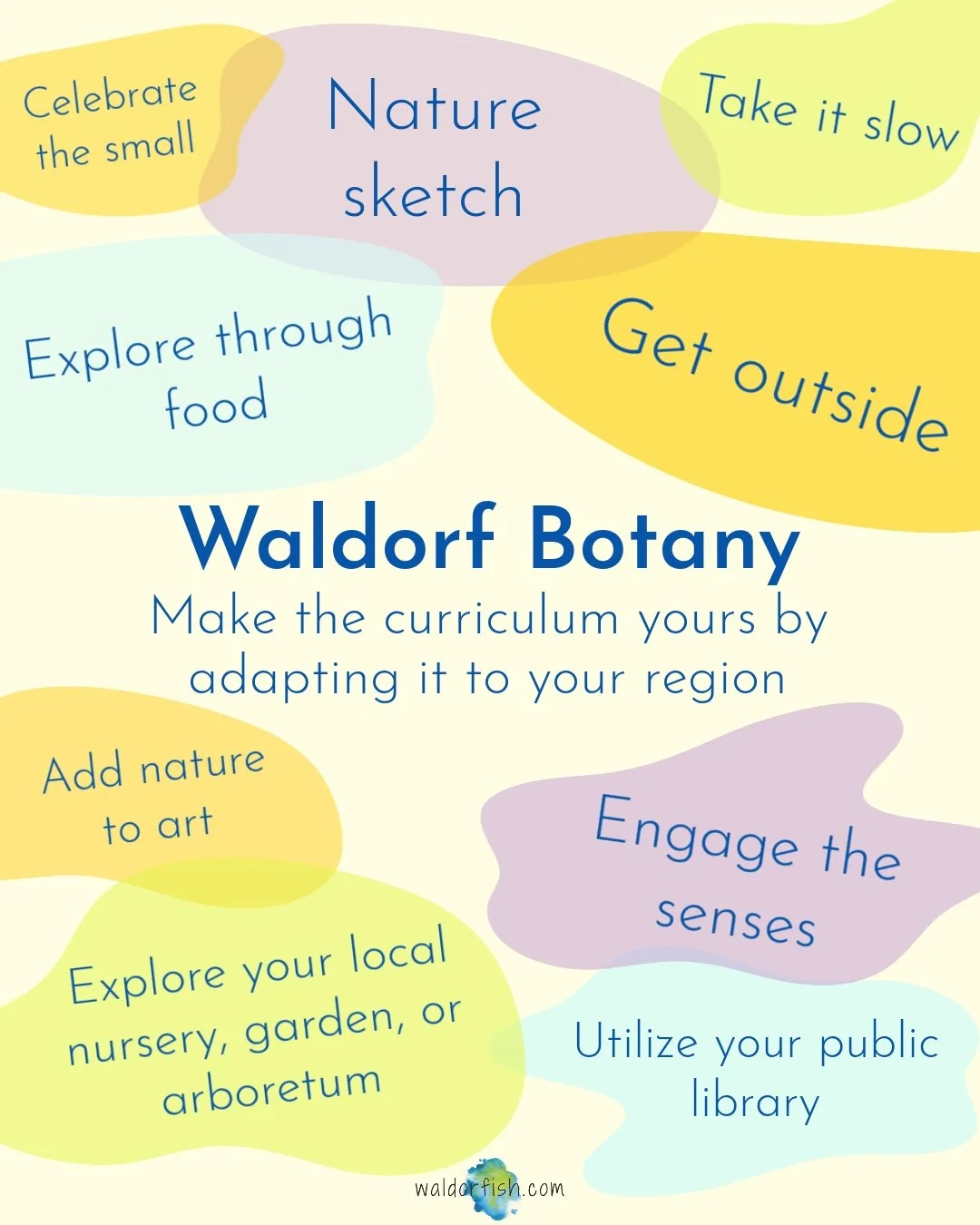
Waldorfish Blog
Nature Journaling in Fifth Grade: More Than Just a Drawing Lesson
In Waldorf Education, science is taught by doing and observing!
In Waldorf education, fifth grade marks a special shift - one where science becomes more focused, more intentional.
Beginning with Botany in the fifth grade and progressing to Physics, Chemistry, Geology, Anatomy, and more in the later years, students are invited into the world of science not through textbooks or lectures, but through phenomenology—an approach that begins with observation and lived experience.
In practical terms, this means students are encouraged to experience scientific phenomena directly, often through demonstrations or hands-on activities, and then draw their own conclusions. No memorizing facts just to regurgitate them—this is science experienced through the senses.
One of the most beloved activities in the fifth-grade Botany block is something called Nature Sketching (sometimes also called Nature Journaling). It’s simple on the surface: students take their colored pencils, etc. and sketchbooks outdoors, find one subject that captures their attention - a flower, a leaf, even a curled root peeking out of the earth - and spend time carefully observing and drawing it.
But here’s the thing: it’s not about the drawing. Not really.
Nature sketching provides a moment of quiet in a busy, fast world.
Sure, students are encouraged to draw what they see with care - matching color, texture, shape, position - but the true goal is deeper. We’re helping them learn to slow down, to really look, and to begin noticing the small details that might otherwise go unseen.
What does the flower smell like? What’s its texture? How many petals? What’s the light doing at that time of day?
This moment of quiet, focused attention is a rare gift in our fast-paced world. And it turns out, it’s doing more than just building observation skills. Nature journaling also introduces two incredibly important ways of thinking that scientists and artists alike rely on: distributed cognition and metacognition.
Let’s unpack those.
Distributed cognition is a fancy way of saying: sometimes, our brains need a little help keeping track of everything. That’s why we use things like calendars, grocery lists, or calculators - they’re all tools that “share the load” of thinking. In the same way, a nature journal becomes a thinking partner. Instead of trying to remember every detail of a flower or the texture of a leaf, the student writes it down or draws it. Their journal becomes an extension of their memory and attention - just like a scientist’s field notebook.
And then there’s metacognition - thinking about our thinking. As John Muir Laws puts it, “Thinking about our thinking helps us think better.” When students go back and review their nature sketches and notes, they’re not just remembering what they saw; they’re also reflecting on how they observed, what they were curious about, and how their perspective might have changed. That’s metacognition in action - and it’s a powerful habit to develop.
Nature sketching is a multi-faceted, powerful tool.
What’s more, the simple act of nature sketching engages a whole web of skills: fine motor skills, attention to detail, language arts (through labeling, note-taking, or journaling), even basic quantitative skills like counting, measuring, and comparing. And every time a student tries something new - maybe they’ve never blended colored pencils to show shading before, or never really paid attention to the shape of a leaf - their brain is making new connections. That’s neuroplasticity at work: the brain growing and adapting through experience.
So while it may look like just a quiet moment with paper and pencil out in the garden or forest, Nature Journaling is a deceptively powerful tool - one that builds scientific thinking, strengthens artistic observation, supports language and reflection, and even grows the brain itself!
And best of all? It invites the student into a lifelong relationship with the natural world - one quiet sketch at a time. And what our students learn to love, they will strive to protect.
More from Waldorfish:
About the Authors
Robyn Beaufoy is Waldorfish’s CEO, and also a course instructor for Simple Season, Waldorf Art for Beginners, and Weekly Art Foundations. You’ll find her intuitive touches and influences throughout everything Waldorfish offers. Robyn has been in the world of education for over 25 years, with an MA in Education and a certification in Waldorf teaching - she also homeschooled both of her children for some of that time. In 2012 Robyn co-founded Waldorfish.com, creating it with the vision of making Waldorf inspired-art and pedagogy more accessible, joyful, and doable for homeschoolers all over the world.
Caitlin Amajor is Waldorfish’s course instructor for Geometry grades 5 & 6, Botany, and Geology, as well as our Administrative Assistant. From a young age, Caitlin has been immersed in Waldorf education, attending a Waldorf school from K-8. After receiving a BA in History, Caitlin gained her certification in Waldorf teaching, and spent seven years as a Waldorf class teacher in the upper grades. With a special fondness for watercolor painting and geometry, Caitlin loves bringing Waldorf education to her students all over the world, and seeing their own individuality and style bloom from the curriculum!
Waldorf Botany Curriculum: Shifting Focus to the Higher Plants
A watercolor painting of the “higher plants” from our Botany course!
In Waldorf fifth grade botany, the second block focuses on the “higher plants,” or those that have true leaves, roots, stems, and flowers!
(To learn more about the first block and its focus, click here).
The second block, often done in the spring, is the perfect time to study these more complex plants with new methods.
Why?
The curriculum meets the developing fifth grader right where they are, which is on the cusp of entering middle school!
The growing fifth grader is ready to use their observational skills in more complex and challenging ways, and the educator can begin to introduce concepts using phenomenological techniques, preparing them for middle school science curriculum.
The shift in the Botany curriculum is notable; the fifth grader is no longer living so much in the world of imagination and story, but instead, is eager to explore and learn more about the world around them.
In Botany, the second block closely follows the growth of a plant from the very beginning. As the fifth grader is growing and changing rapidly, it’s the perfect time to connect with nature and see how it blossoms as well.
An example main lesson book page from our Botany course.
Commonly, students study seeds, germination, photosynthesis, flowering, and seed dispersal, all the while incorporating opportunities to connect to plant life thriving in their own region. As well, students may explore trees, categorize plants according to their characteristics (monocots and dicots), and so much more- the possibilities are endless!
This block provides an opportunity for the educator to bring the students directly into the learning process, and begin to nurture observational skills and the ability to come to educated conclusions.
It’s a time to do, feel, see, smell, taste, and use all of the senses to connect with the plant world!
From sprouting seeds, to dissecting flowers, the curriculum provides all kinds of opportunities to enliven the students’ connection to the vast world of Botany.
Wondering where to begin?
Most simply, and perhaps more meaningfully, start outside! Gain inspiration, connect with nature, and explore the beauty of the higher plants out in nature; it really is the best place to begin.
Our Botany course provides a full year’s worth of curriculum for the school year, including two full blocks, hands-on demonstrations, and so much more.
About the Authors
Robyn Beaufoy is Waldorfish’s CEO, and also a course instructor for Simple Season, Waldorf Art for Beginners, and Weekly Art Foundations. You’ll find her intuitive touches and influences throughout everything Waldorfish offers. Robyn has been in the world of education for over 25 years, with an MA in Education and a certification in Waldorf teaching - she also homeschooled both of her children for some of that time. In 2012 Robyn co-founded Waldorfish.com, creating it with the vision of making Waldorf inspired-art and pedagogy more accessible, joyful, and doable for homeschoolers all over the world.
Caitlin Amajor is Waldorfish’s course instructor for Geometry grades 5 & 6, and Botany, as well as our Administrative Assistant. From a young age, Caitlin has been immersed in Waldorf education, attending a Waldorf school from K-8. After receiving a BA in History, Caitlin gained her certification in Waldorf teaching, and spent seven years as a Waldorf class teacher in the upper grades. With a special fondness for watercolor painting and geometry, Caitlin loves bringing Waldorf education to her students all over the world, and seeing their own individuality and style bloom from the curriculum!
5 Tips for Studying the Lower Plants in Waldorf Fifth Grade Botany
Why begin with the “lower plants” in Waldorf Botany curriculum? In fifth grade Botany, we often begin with a full block that explores the “lower plants” or “simple plants”- algae, fungi, lichen, moss, and ferns.
Curious to learn more about why botany is usually split into two blocks? Click here!
Hands-on experience is the best way to connect with the lower plant world!
While we know that some of these lower plants are not all truly plants, each of these organisms have a magical, mystical sense to them in their structures, purpose, and appearance. Exploring them opens up the world of botany for the student in a gentle way; perfect for the young fifth grader who is just beginning their developmental journey towards puberty and middle school.
How can you bring hands-on experiences of the lower plants into your botany curriculum?
We’ve got five ideas to get you started!
Algae
Plan a time to be out in nature, and see if you kind find algae in a nearby river, lake, or beach. Note its color, movement, texture, and location. Not near a body of water? Head to your local library and ask for books and resources on algae, preferably one with all kinds of images!
Lichen
Head outside and try to find lichen. Look around on surfaces: fence posts, rocks, concrete, stepping stones, etc. This is a great activity even for those who live in urban areas- you’ll be surprised where lichen grows!
Fungi
Create your own sourdough starter (a yeast fungi!) and learn how to tend to it to make it active for baking. Make bread, pancakes, bagels- the sourdough possibilities are endless!
Moss
Build a terrarium using moss, plants, and other elements. This can be used as an ongoing project throughout your study of Botany, as you can continuously add to your terrarium, and watch it thrive!
Ferns
Bring ferns into the kitchen! Head to your local market and purchase some fiddleheads for a taste test. After observing them closely, find a yummy recipe and cook them up together.
Enjoy the outdoors, and see what you discover!
When it doubt- Go outside! You’ll be amazed at how the lower plants thrive in even the most unexpected places. Explore and connect with nature- it’s always worth it!
Looking for more support for the fifth grade Botany curriculum? Our course offers a full year’s worth of material, main lesson book page tutorials, art lessons, instructor support, and so much more!
About the Authors
Robyn Beaufoy is Waldorfish’s CEO, and also a course instructor for Simple Season (coming soon!), Waldorf Art for Beginners, and Weekly Art Foundations. You’ll find her intuitive touches and influences throughout everything Waldorfish offers. Robyn has been in the world of education for over 25 years, with an MA in Education and a certification in Waldorf teaching - she also homeschooled both of her children for some of that time. In 2012 Robyn co-founded Waldorfish.com, creating it with the vision of making Waldorf inspired-art and pedagogy more accessible, joyful, and doable for homeschoolers all over the world.
Caitlin Amajor is Waldorfish’s course instructor for Geometry grades 5 & 6, and Botany, as well as our Administrative Assistant. From a young age, Caitlin has been immersed in Waldorf education, attending a Waldorf school from K-8. After receiving a BA in History, Caitlin gained her certification in Waldorf teaching, and spent seven years as a Waldorf class teacher in the upper grades. With a special fondness for watercolor painting and geometry, Caitlin loves bringing Waldorf education to her students all over the world, and seeing their own individuality and style bloom from the curriculum!
Waldorf Botany: Adapting the Curriculum to Your Region
One goal of Waldorf Education is to foster a child’s connection to the world and all its parts - this begins with cultivating observations of their own surroundings and the environment in which they live.
Waldorf education thrives when the curriculum is tailored to the region in which it is presented, enjoyed, and experienced.
This is true throughout the grades and across subjects - especially in fifth grade Botany!
This leaf printing activity is found in our Botany course- it’s a great way to mix art and nature in one!
At the beginning of the Botany blocks, students engage in a general exploration of the plant world, including examples that are familiar to everyone, no matter their location, such as the dandelion or the honeybee (as a pollinator.)
But to make the Botany curriculum really resonate with the student, educators can imbue the material with examples that connect the child to the region in which they live. After all, from the desert to the coast, to the most rural or urban setting, plant life is everywhere!
Our Botany course provides over 75 lessons, enough for two blocks of fifth grade Botany curriculum, as well as supplemental activity suggestions that will help you make the curriculum your own. Plus, it provides a multitude of in-depth tips, suggestions, hands-on demonstrations, a detailed supply list, and much more to tailor the curriculum to you and your region.
Here are some simple tips to get you started!
1. Get outside
Whether this outside time is in a park, on a hike, on your balcony, or in your backyard, encouraging unstructured time outdoors to observe and connect with the living things around you is incredibly valuable. Keep it simple- go outside!
2. Explore through food
Botany studies and food go together perfectly. Go to the grocery store, and pick out three new items from the produce section to try- what part of the plant are we eating? How does it taste? How does it make us feel? Try a new veggie soup recipe, brew an interesting new herbal tea, or make a colorful salad- the possibilities are endless!
3. Nature sketch
Nature sketching (which is explored more in-depth in our Botany course) is a simple yet impactful way to create connection between the child and the natural world. Slow down, sit in nature, and sketch what you see!
4. Take it slow
Whether you are sketching, cooking, or taking a walk, enjoy the process, and take it slowly. When it comes to encouraging observations and building connections, doing less truly cultivates more.
5. Celebrate the small
Sometimes, it feels like we need to do it all. For some, long strenuous hikes to see impressive landscapes and plant life is doable, but it’s also okay if small and simple is more your style! Appreciating the small, like your own little houseplant or the apartment complex’s flower bed, is a practice in finding the beauty of the plant world that is often overlooked.
6. Add nature to art
Wreath making is an activity that combines getting outside, engaging with the plant world, and creating something beautiful!
Celebrate the beauty of nature by incorporating it into your art lessons! Use your local vegetation to create a beautiful wreath (there’s a tutorial for this inside our Botany course!), collect leaves to use for paint printing, weave flowers and grasses for a crown…the options are endless! Working with the plant life around you to create beautiful artwork is a wonderful way to build appreciation and wonder of the natural world in your own region.
7. Engage the senses
The Botany blocks are the perfect opportunity to smell, feel, taste, see and touch! Make your own essential oils, create a moss garden, taste a variety of new grains or vegetables, observe the fall colors change, and enjoy touching the different textures of tree bark. So much can be learned from these sensory experiences.
8. Explore your local nursery/garden/arboretum
Your local plant nursery, community garden or arboretum will be a wonderful, inexpensive place to explore, see new plants, and gain the insights of experts as well! Enjoy the minimal prep a visit requires, and see what treasures you discover.
9. Utilize your public library
Your local librarian is an excellent resource- ask where your local plant section is, and see what you find! Books on local plant life, gardening books, cookbooks that utilize local ingredients - you never know what you might find that will spark interest and inspiration!
Waldorf Education's emphasis on fostering a child's connection to the world is found throughout the fifth-grade Botany curriculum, and there are so many simple yet impactful ways to make the curriculum yours.
Enjoy!
About the Authors
Robyn Beaufoy is Waldorfish’s CEO, and also a course instructor for Simple Season (coming soon!), Waldorf Art for Beginners, and Weekly Art Foundations. You’ll find her intuitive touches and influences throughout everything Waldorfish offers. Robyn has been in the world of education for over 25 years, with an MA in Education and a certification in Waldorf teaching - she also homeschooled both of her children for some of that time. In 2012 Robyn co-founded Waldorfish.com, creating it with the vision of making Waldorf inspired-art and pedagogy more accessible, joyful, and doable for homeschoolers all over the world.
Caitlin Amajor is Waldorfish’s course instructor for Geometry grades 5 & 6, and Botany, as well as our Administrative Assistant. From a young age, Caitlin has been immersed in Waldorf education, attending a Waldorf school from K-8. After receiving a BA in History, Caitlin gained her certification in Waldorf teaching, and spent seven years as a Waldorf class teacher in the upper grades. With a special fondness for watercolor painting and geometry, Caitlin loves bringing Waldorf education to her students all over the world, and seeing their own individuality and style bloom from the curriculum!
More Botany resources you will enjoy:
Looking for something?
Welcome to Waldorfish! We started this adventure in 2012 out of a desire to make Waldorf training more accessible to class teachers in remote locations and to homeschooling families everywhere! Read more, click here.
WE WON! Our Weekly Art courses were voted “best interactive art program.” Learn more about the award, here.
A few of our most popular blog posts:

